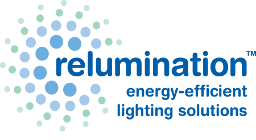LEDs are available in different color temperatures. A color temperature, measured in degrees Kelvin (K), refers to the color that a black body will glow when it’s heated to a specified temperature in degrees Kelvin. As you heat a black body, it will start glowing a red/orange color. As you increase its temperature, it becomes yellowish white. It then becomes white-hot at a higher temperature and will become blue at even higher temperatures.
The point of this is that you can get LEDs that give off light that looks like sunlight during different times of the day. During sunrise, the color temperature of sunlight is on the low side (2000 degrees K) and is has an orange/yellow color. As the day progresses toward noon, sunlight transitions to a yellowish color and finally to a blue/white light (5000 degrees K). Later in the day, sunlight goes back to the color temperatures it had in early morning.
Our bodies have a circadian rhythm that is controlled by the color of sunlight. The color of sunlight during midday is white with some blue. This triggers alertness and elevates mood. During the evening hours, sunlight becomes yellow/orange, which triggers melatonin and causes drowsiness.
When your body goes through its natural circadian rhythm, it functions at its peak efficiency. On the other hand, disturbing this rhythm (with unnatural artificial lighting) causes sleep and health problems. Therefore, using LED hospital lighting that mimics sunlight at different times of the day is beneficial to your patients.
For example, you might use white light (simulating midday) during the late morning and midday hours, and use a “warm” yellow/orange light during the evening hours to prepare your patients for sleep. In the areas where your staff work, the lighting should be similar to that of midday to keep them alert.
While there are LEDs that change their color temperature continuously, you could opt for a simpler two color system for your patients in which one set of lights are for inducing daytime activity while the other are for sleep preparation during the evening hours. Proper LED lighting reduces depression, decreases fatigue, improves alertness, and improves sleep quality.
